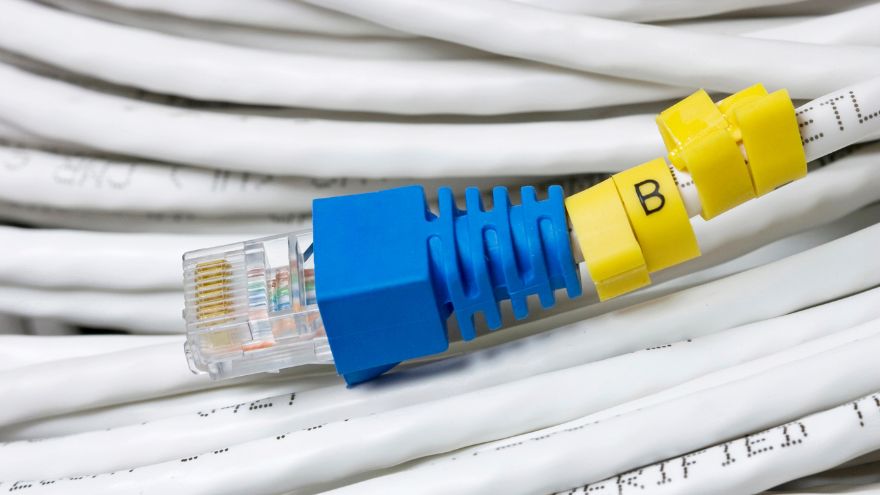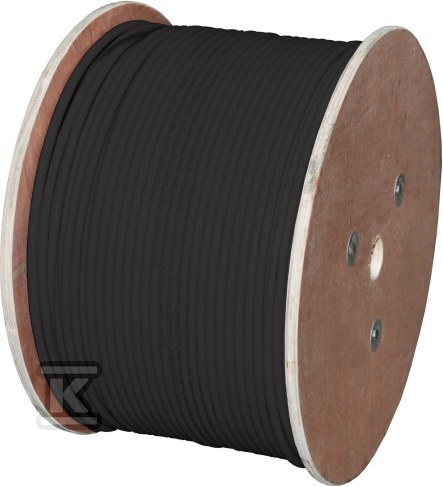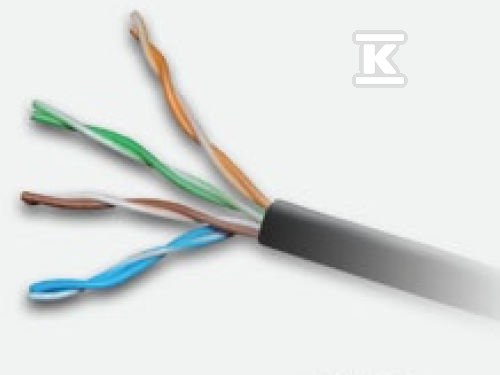Nowadays, a computer and a router are available in every home. In the era of increasing need for network connectivity, especially in areas requiring stable and reliable internet connection, choosing the right LAN cable for underground installation is becoming a key element of network infrastructure planning. In order to provide fast internet at home and an effective network in the office, the choice of cabling is crucial for long-term network reliability and performance.

Check the LAN ground cables at the Onninen wholesaler
How should a LAN underground cable be protected?
When selecting underground cables for LAN networks, you should consider between traditional twisted pair, such as the T-11B 4x2x0.5 LAN data cable , and modern optical fiber. It is important that the connection, whether using traditional copper wire or optical fiber, meets the needs generated by computers. Various types of cables are buried in the ground, including:
- network cable, also known as Ethernet cable,
- telephone cable still has its place, especially in installations requiring connection to the telephone network.
 In order for network cables, such as the F/UTP cat.5e network cable, to permanently and reliably deliver the network to the router that manages and distributes the connection to the computer, they should be properly secured. First of all, you should use LAN cables designed for outdoor installations, with appropriate insulation, e.g. HDPE.
In order for network cables, such as the F/UTP cat.5e network cable, to permanently and reliably deliver the network to the router that manages and distributes the connection to the computer, they should be properly secured. First of all, you should use LAN cables designed for outdoor installations, with appropriate insulation, e.g. HDPE.
At the bottom of the trench where the network cables will be placed, it is recommended to lay a 10 cm layer of sand bedding. This protection between the cable and the ground is intended to protect the cable from excessive tension. Then, the cables placed in the trench should be covered with a 25 cm layer of sand. When covering it, it is important to eliminate stones, bricks and other sharp objects.
How to choose the throughput of a ground cable for a LAN?
When selecting the throughput of a landline cable for a LAN, there are several key factors to consider that affect network performance and reliability.
-
 LAN Standard: Specifies which LAN standard the cable will support, such as Ethernet (10/100/1000 Mbps) or Gigabit Ethernet (10/100/1000/10000 Mbps).
LAN Standard: Specifies which LAN standard the cable will support, such as Ethernet (10/100/1000 Mbps) or Gigabit Ethernet (10/100/1000/10000 Mbps). - Cable length: The longer the cable, the greater the bandwidth requirements.
- Cable Category: Ethernet cables are divided into categories such as Cat 5e, Cat 6, Cat 6a, Cat 7 Ethernet cable, etc. Each category has specific parameters of bandwidth, attenuation, and ability to reduce electromagnetic interference
- Data Flow Scope: Data transfer requirements such as the number of devices supported, frequency, and expected level of performance.
When selecting a suitable LAN cable for burial in the ground, the distance and connection conditions of the router should also be taken into account.
What twisted pair should a ground LAN cable have?
A twisted pair computer cable, such as the ALANTEC UTP 4PR cat.5e computer cable, is an essential element in the construction of most computer networks, providing reliable and fast connections between devices within the LAN. The selection of the appropriate twisted pair depends on the specific installation and environmental requirements.
Unshielded Twisted Pair (UTP) vs. Foil Shielded Twisted Pair (STP):
-
 UTP is the most common type of Ethernet cable, which consists of unstitched pairs of wires twisted together. UTP is easy to install and is sufficient for most applications.
UTP is the most common type of Ethernet cable, which consists of unstitched pairs of wires twisted together. UTP is easy to install and is sufficient for most applications. - STP is a shielded twisted pair cable that has an additional foil or mesh shield around each pair of wires. It is more resistant to electromagnetic interference, which can be beneficial in environments with intense interference.
FTP cables are also available, similar to shielded (STP), but instead of a mesh screen, they have aluminum foil around each pair of wires. Make sure that the cable meets the appropriate standards and certifications for quality and safety, such as ANSI/TIA or ISO/IEC standards.
How deep should you bury an underground LAN cable?
Regardless of whether you choose traditional copper wire or optical fiber, it is important to shield the cable, which protects against electromagnetic interference and ensures the reliability of data transmission (fast Internet) between the router and the computer in the network. In addition, you should ensure that the cable is properly grounded.
In most cases, it is recommended to bury the underground cable at least 30 cm below the surface. This is a sufficient depth at which the internet cable is protected from accidental damage by digging, gardening, or other surface activities.